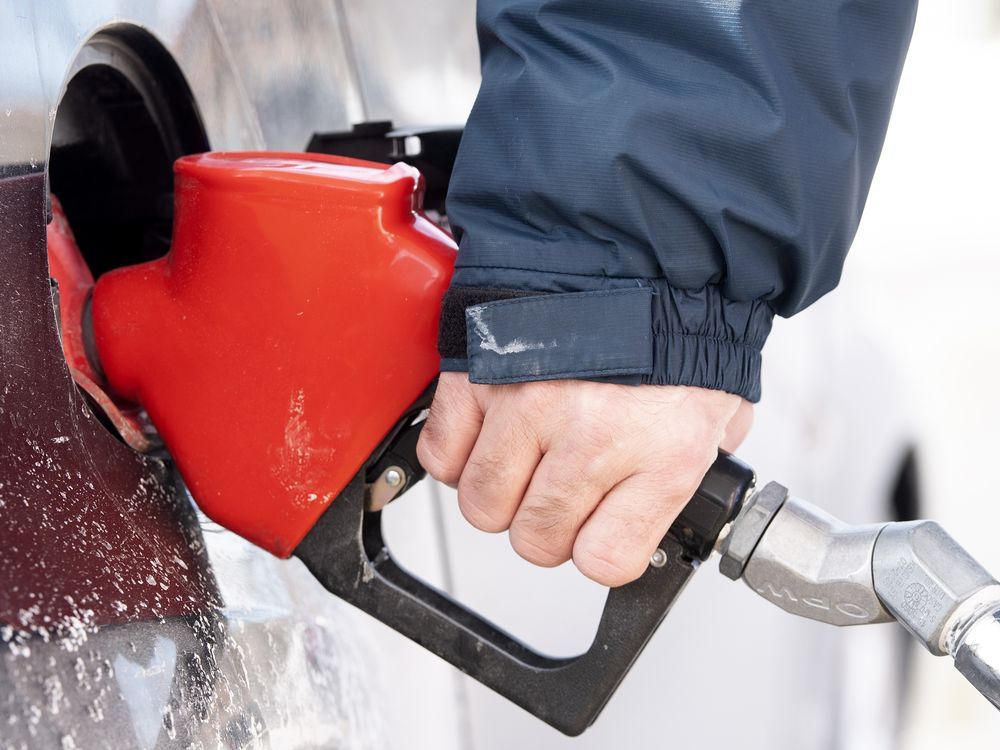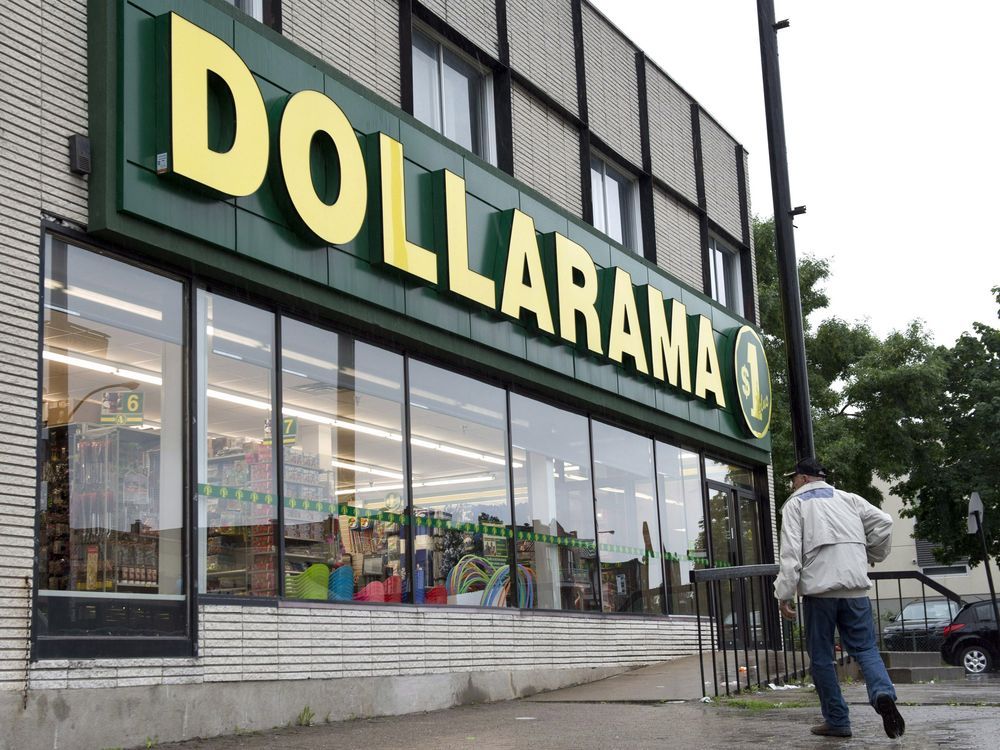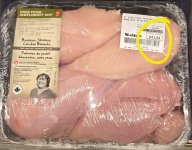Hyperinflation is coming...
- Thread starter B00Mer
- Start date
You are using an out of date browser. It may not display this or other websites correctly.
You should upgrade or use an alternative browser.
You should upgrade or use an alternative browser.
Bank of Canada chief: Inflation likely to tip 8% as soon as next week
Author of the article:Reuters
Reuters
Julie Gordon
Publishing date:Jul 16, 2022 • 15 hours ago • 2 minute read • Join the conversation
OTTAWA — The Bank of Canada expects inflation to go “a little over” 8%, as soon as next week when June’s data is released, and stay in that range for a few more months, Governor Tiff Macklem told a business group in a webcast transcript released late Friday.
Macklem, who spoke to the Canadian Federation of Independent Business the day after Wednesday’s shock 100-basis-point interest rate hike, also urged small business owners to avoid building the current pace of price increases into their contracts.
“Inflation is high sevens. It’s probably going to go a little over eight (8%). We have the next CPI next week. We know oil prices were very high in June, so I wouldn’t be surprised to see it move up,” Macklem said.
Canadian inflation was 7.7% in May, the highest since January 1983. Analysts surveyed by Reuters expect June inflation to hit 8.3%, which would be the highest since 1982. The data will be released on Wednesday at 8:30 a.m. ET.
Macklem reiterated the Bank of Canada now expects inflation to average around 8% for the next few months, then fall to around 3% by the end of 2023 and to the 2% target in 2024.
Canadian Deputy Prime Minister Chrystia Freeland, who also serves as finance minister, on Saturday said the federal government was responding by “not pouring fuel on the flames” through its budget and by tackling some of the drivers of inflation as well as labor and housing policies.
“We are confident that the Bank of Canada has the tools and the expertise to do this job,” she told reporters in a telephone briefing, noting the bank’s independent role.
Macklem also made clear the bank is very concerned about a wage-price spiral, where businesses raise wages to keep workers and then pass the higher costs on to households, who then want higher wages to compensate for inflation.
“You can see this creates a self-perpetuating cycle,” he said, adding the central bank will take the action needed to get inflation back on target.
“So as a business, don’t plan on the current rate of inflation staying. Don’t build that into longer-term contracts. Don’t build that into wage contracts. It is going to take some time, but you can be confident that inflation will come down.”
The CFIB said it could not release its planned recording of Thursday’s webcast due to a technical glitch. The business group published its transcript late on Friday.

 torontosun.com
torontosun.com
Author of the article:Reuters
Reuters
Julie Gordon
Publishing date:Jul 16, 2022 • 15 hours ago • 2 minute read • Join the conversation
OTTAWA — The Bank of Canada expects inflation to go “a little over” 8%, as soon as next week when June’s data is released, and stay in that range for a few more months, Governor Tiff Macklem told a business group in a webcast transcript released late Friday.
Macklem, who spoke to the Canadian Federation of Independent Business the day after Wednesday’s shock 100-basis-point interest rate hike, also urged small business owners to avoid building the current pace of price increases into their contracts.
“Inflation is high sevens. It’s probably going to go a little over eight (8%). We have the next CPI next week. We know oil prices were very high in June, so I wouldn’t be surprised to see it move up,” Macklem said.
Canadian inflation was 7.7% in May, the highest since January 1983. Analysts surveyed by Reuters expect June inflation to hit 8.3%, which would be the highest since 1982. The data will be released on Wednesday at 8:30 a.m. ET.
Macklem reiterated the Bank of Canada now expects inflation to average around 8% for the next few months, then fall to around 3% by the end of 2023 and to the 2% target in 2024.
Canadian Deputy Prime Minister Chrystia Freeland, who also serves as finance minister, on Saturday said the federal government was responding by “not pouring fuel on the flames” through its budget and by tackling some of the drivers of inflation as well as labor and housing policies.
“We are confident that the Bank of Canada has the tools and the expertise to do this job,” she told reporters in a telephone briefing, noting the bank’s independent role.
Macklem also made clear the bank is very concerned about a wage-price spiral, where businesses raise wages to keep workers and then pass the higher costs on to households, who then want higher wages to compensate for inflation.
“You can see this creates a self-perpetuating cycle,” he said, adding the central bank will take the action needed to get inflation back on target.
“So as a business, don’t plan on the current rate of inflation staying. Don’t build that into longer-term contracts. Don’t build that into wage contracts. It is going to take some time, but you can be confident that inflation will come down.”
The CFIB said it could not release its planned recording of Thursday’s webcast due to a technical glitch. The business group published its transcript late on Friday.

Bank of Canada chief: Inflation likely to tip 8% as soon as next week
The Bank of Canada expects inflation to go "a little over" 8%, as soon as next week, Tiff Macklem said in a transcript released Friday.
So. . . about 15% of Chicken Little level. Lower than '73-'74 and '79-'81.
Run and hide! They're destroying Amer. . . um. . . Canada!
Run and hide! They're destroying Amer. . . um. . . Canada!
Inflation is about three times the official number. They neglect to factor in things like gas, which has basically doubled in a little over a year.
Economists predict inflation climbed even higher in June amid 'reopening effect'
Author of the article:Canadian Press
Canadian Press
Nojoud Al Mallees
Publishing date:Jul 17, 2022 • 17 hours ago • 3 minute read • Join the conversation
OTTAWA — Economists are predicting an even higher reading of inflation for June as energy and food prices crept higher and the economy reopened further.
The consumer price index in Canada hit a nearly 40-year high of 7.7 per cent in May. Now, economists are forecasting that number hit at least eight per cent last month.
Statistics Canada will release inflation data for June on Wednesday, a week after the Bank of Canada raised its key interest rate by a full percentage point.
Prices have been soaring globally for everything from food to furniture to gasoline, as pandemic restrictions have eased. Energy prices skyrocketed 35 per cent year-over-year, while food prices rose by about 10 per cent.
And more increases are on the way, with several food suppliers warning grocery retailers to expect further price hikes.
Derek Holt, head of capital markets economics at Scotiabank, projects inflation hit 8.9 per cent in June due to a “reopening effect.”
“Restrictions coming off the pandemic fell even further into June and that unleashed a whole wave of activity — more people dining, more people flying, more people getting out on a boat,” Holt said.
An RBC report published on Friday said price acceleration in June is expected to be the result of even higher food and energy prices.
“Oil prices rose another 4.8 per cent from May and consumer food prices have been surging in part due to higher commodity prices and acute supply chain disruptions,” the report said.
For Canadians whose wages continue to lag inflation, rising prices are leaving them worse off financially.
In June, average hourly wages were 5.2 per cent higher than a year ago.
The Bank of Canada said global pressures are largely to blame for soaring inflation, with the Russian invasion of Ukraine and supply chain issues putting pressure on energy and food prices.
In the U.S., inflation climbed to another multi-decade high in June, hitting 9.1 per cent.
Domestically, the central bank said the economy is “overheated” as businesses struggle to find workers and demand for their products remains strong. The unemployment rate reached a record low of 4.9 per cent in June.
Another factor that threatens to keep inflation high is rising inflation expectations among consumers and businesses, as evidenced by surveys conducted by the Bank of Canada.
With the interest rate being its only tool against inflation, the central bank is hoping it can slow domestic demand and manage inflation expectations with its supersized rate hike.
In its most recent monetary policy report, the Bank of Canada drove this point home.
“The bank is guarding against the risk that high inflation becomes entrenched because if it does, restoring price stability will require even higher interest rates, leading to a weaker economy.”
“Restoring price stability — low, stable and predictable inflation — is paramount,” said bank governor Tiff Macklem in a news conference following the rate announcement.
However, Holt said the impact of the Bank of Canada’s most recent rate increase will take time to manifest.
“That’s an experiment that’s going to take six plus months to unfold,” he said.
The Bank of Canada is forecasting inflation to reach eight per cent over the next few months before beginning to decline to 4.6 per cent next year.
CIBC senior economist Karyne Charbonneau said the Bank of Canada’s forecast for inflation declining over the next year is hinged largely on global factors, which are outside of the central bank’s control.
“Those are the same factors that explain the majority of the bank’s inflation forecast errors over the past year, suggesting they are also the hardest to predict,” Charbonneau wrote in a note.
And while there are some signs of cooling in the Canadian housing market, which would bring down overall inflation, shelter costs account for a relatively small portion of the projected decline in inflation over the next year.
In June, average national housing prices declined by 1.8 per cent year-over-year.
Without the easing of global pressures, Charbonneau said more aggressive action from the Bank of Canada will be necessary.
“If we don’t get a little help from our friends abroad and a healthy dose of luck, we will need a recession to bring down inflation.”

 torontosun.com
torontosun.com
Author of the article:Canadian Press
Canadian Press
Nojoud Al Mallees
Publishing date:Jul 17, 2022 • 17 hours ago • 3 minute read • Join the conversation
OTTAWA — Economists are predicting an even higher reading of inflation for June as energy and food prices crept higher and the economy reopened further.
The consumer price index in Canada hit a nearly 40-year high of 7.7 per cent in May. Now, economists are forecasting that number hit at least eight per cent last month.
Statistics Canada will release inflation data for June on Wednesday, a week after the Bank of Canada raised its key interest rate by a full percentage point.
Prices have been soaring globally for everything from food to furniture to gasoline, as pandemic restrictions have eased. Energy prices skyrocketed 35 per cent year-over-year, while food prices rose by about 10 per cent.
And more increases are on the way, with several food suppliers warning grocery retailers to expect further price hikes.
Derek Holt, head of capital markets economics at Scotiabank, projects inflation hit 8.9 per cent in June due to a “reopening effect.”
“Restrictions coming off the pandemic fell even further into June and that unleashed a whole wave of activity — more people dining, more people flying, more people getting out on a boat,” Holt said.
An RBC report published on Friday said price acceleration in June is expected to be the result of even higher food and energy prices.
“Oil prices rose another 4.8 per cent from May and consumer food prices have been surging in part due to higher commodity prices and acute supply chain disruptions,” the report said.
For Canadians whose wages continue to lag inflation, rising prices are leaving them worse off financially.
In June, average hourly wages were 5.2 per cent higher than a year ago.
The Bank of Canada said global pressures are largely to blame for soaring inflation, with the Russian invasion of Ukraine and supply chain issues putting pressure on energy and food prices.
In the U.S., inflation climbed to another multi-decade high in June, hitting 9.1 per cent.
Domestically, the central bank said the economy is “overheated” as businesses struggle to find workers and demand for their products remains strong. The unemployment rate reached a record low of 4.9 per cent in June.
Another factor that threatens to keep inflation high is rising inflation expectations among consumers and businesses, as evidenced by surveys conducted by the Bank of Canada.
With the interest rate being its only tool against inflation, the central bank is hoping it can slow domestic demand and manage inflation expectations with its supersized rate hike.
In its most recent monetary policy report, the Bank of Canada drove this point home.
“The bank is guarding against the risk that high inflation becomes entrenched because if it does, restoring price stability will require even higher interest rates, leading to a weaker economy.”
“Restoring price stability — low, stable and predictable inflation — is paramount,” said bank governor Tiff Macklem in a news conference following the rate announcement.
However, Holt said the impact of the Bank of Canada’s most recent rate increase will take time to manifest.
“That’s an experiment that’s going to take six plus months to unfold,” he said.
The Bank of Canada is forecasting inflation to reach eight per cent over the next few months before beginning to decline to 4.6 per cent next year.
CIBC senior economist Karyne Charbonneau said the Bank of Canada’s forecast for inflation declining over the next year is hinged largely on global factors, which are outside of the central bank’s control.
“Those are the same factors that explain the majority of the bank’s inflation forecast errors over the past year, suggesting they are also the hardest to predict,” Charbonneau wrote in a note.
And while there are some signs of cooling in the Canadian housing market, which would bring down overall inflation, shelter costs account for a relatively small portion of the projected decline in inflation over the next year.
In June, average national housing prices declined by 1.8 per cent year-over-year.
Without the easing of global pressures, Charbonneau said more aggressive action from the Bank of Canada will be necessary.
“If we don’t get a little help from our friends abroad and a healthy dose of luck, we will need a recession to bring down inflation.”

Economists predict inflation climbed even higher in June amid 'reopening effect'
Economists are predicting an even higher reading of inflation for June as energy and food prices crept higher and economy reopened further.
Analyst report examines Dollarama's price hikes
Author of the article:La Presse Canadienne
La Presse Canadienne
Stéphane Rolland
Publishing date:Jul 18, 2022 • 12 hours ago • 2 minute read • Join the conversation
MONTREAL — Dollarama has reportedly raised the price of many items in recent months as the Montreal-based retailer tracks rivals who have raised prices amid high inflation, according to a financial analyst’s report.
The Montreal retailer’s prices have increased by an average of 6% since last November, estimates Chris Li of Desjardins Capital Markets, who followed a sample of about 280 items sold in stores.
Mr Li believes the retailer is in catch-up mode as the company let competitors raise prices first. “Dollarama has been more active lately in order to catch up with competitors’ price increases at the start of the year,” he says.
Within the sample of 280 products, Li listed 97 items with price increases from April. As of April, the analyst had only identified 25.
These adjustments would have been made while inflation reached its highest level since January 1983. The consumer price index (CPI) in Canada increased by 7.7% annually in May, according to data from Statistics Canada.
It was not possible to obtain an immediate reaction from Dollarama. Last June, Chairman and CEO Neil Rossy reiterated that the company’s strategy was to let competitors make the first move as rising transportation and labour costs forced all retailers to revise their prices. “Our job is to make sure that our value to the market remains what it always has been or improves.”
Excluding food, Mr. Li estimates that items at Dollarama are 40% to 50% cheaper than at Walmart or Amazon. However, he notes that the gap for food is narrowing. In February, food was 6.3% cheaper there. The gap closed at 2.4% in July.
In light of this data, the analyst believes that competition between retailers remains “rational,” which means that the large chains manage to pass on the increase in costs to their customers by raising prices and that are not forced to erode their margins to attract customers to the store.
The analyst recognizes that the exercise he is doing has its limits. “Our comparison is not perfect, because several products are not perfectly identical. We did our best to find comparable products with similar characteristics (perceived quality, size, brand, etc.).
The catch-up exercise at Dollarama bodes well for comparable sales, a metric that is used to measure growth without taking into account store openings and acquisitions. The analyst thinks Dollarama could exceed its forecast for comparable sales growth of 4% to 5% in fiscal 2023 (ending at the end of January).
“We expect sales to be on a roll with strong footfall as consumers seek bargains in an environment of high inflation, which will be offset by higher spending due to wage pressure.”
Introducing $5 Items
The Desjardins Capital Markets review was also an opportunity to take stock of the introduction of items at a price of $5. The new price range was announced in March and the first $5 items hit the shelves at Dollarama in June.
It was the first time Dollarama introduced a new price range since the $4 maximum threshold in 2015.
“The supply of $5 products is still very limited and it is too early to draw conclusions,” comments the analyst. We only found a few items in the $4.25 to $5 range, mostly in the health and cosmetics segment like shampoo and body soap.”

 torontosun.com
torontosun.com
Author of the article:La Presse Canadienne
La Presse Canadienne
Stéphane Rolland
Publishing date:Jul 18, 2022 • 12 hours ago • 2 minute read • Join the conversation
MONTREAL — Dollarama has reportedly raised the price of many items in recent months as the Montreal-based retailer tracks rivals who have raised prices amid high inflation, according to a financial analyst’s report.
The Montreal retailer’s prices have increased by an average of 6% since last November, estimates Chris Li of Desjardins Capital Markets, who followed a sample of about 280 items sold in stores.
Mr Li believes the retailer is in catch-up mode as the company let competitors raise prices first. “Dollarama has been more active lately in order to catch up with competitors’ price increases at the start of the year,” he says.
Within the sample of 280 products, Li listed 97 items with price increases from April. As of April, the analyst had only identified 25.
These adjustments would have been made while inflation reached its highest level since January 1983. The consumer price index (CPI) in Canada increased by 7.7% annually in May, according to data from Statistics Canada.
It was not possible to obtain an immediate reaction from Dollarama. Last June, Chairman and CEO Neil Rossy reiterated that the company’s strategy was to let competitors make the first move as rising transportation and labour costs forced all retailers to revise their prices. “Our job is to make sure that our value to the market remains what it always has been or improves.”
Excluding food, Mr. Li estimates that items at Dollarama are 40% to 50% cheaper than at Walmart or Amazon. However, he notes that the gap for food is narrowing. In February, food was 6.3% cheaper there. The gap closed at 2.4% in July.
In light of this data, the analyst believes that competition between retailers remains “rational,” which means that the large chains manage to pass on the increase in costs to their customers by raising prices and that are not forced to erode their margins to attract customers to the store.
The analyst recognizes that the exercise he is doing has its limits. “Our comparison is not perfect, because several products are not perfectly identical. We did our best to find comparable products with similar characteristics (perceived quality, size, brand, etc.).
The catch-up exercise at Dollarama bodes well for comparable sales, a metric that is used to measure growth without taking into account store openings and acquisitions. The analyst thinks Dollarama could exceed its forecast for comparable sales growth of 4% to 5% in fiscal 2023 (ending at the end of January).
“We expect sales to be on a roll with strong footfall as consumers seek bargains in an environment of high inflation, which will be offset by higher spending due to wage pressure.”
Introducing $5 Items
The Desjardins Capital Markets review was also an opportunity to take stock of the introduction of items at a price of $5. The new price range was announced in March and the first $5 items hit the shelves at Dollarama in June.
It was the first time Dollarama introduced a new price range since the $4 maximum threshold in 2015.
“The supply of $5 products is still very limited and it is too early to draw conclusions,” comments the analyst. We only found a few items in the $4.25 to $5 range, mostly in the health and cosmetics segment like shampoo and body soap.”

Analyst report examines Dollarama's price hikes
MONTREAL — Dollarama has reportedly raised the price of many items in recent months as the Montreal-based retailer tracks rivals who have raised prices amid high in…
Defund the fuckers and see how they handle inflation
OMG does he understand the consequences of this? Does he not understand he's supporting the Party that is giving these "hand outs" so he also bares responsibility for this? How stupid does he think we are? How insulting!



